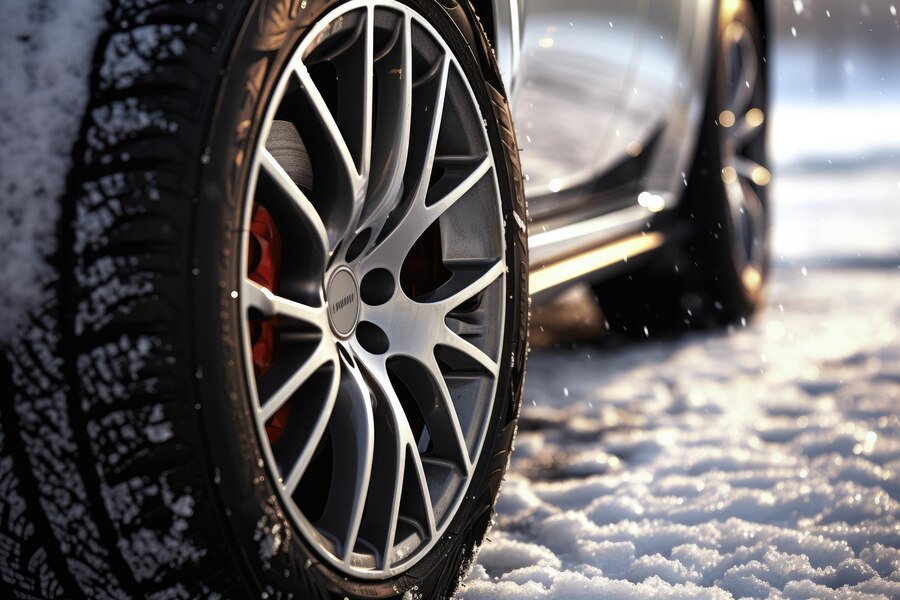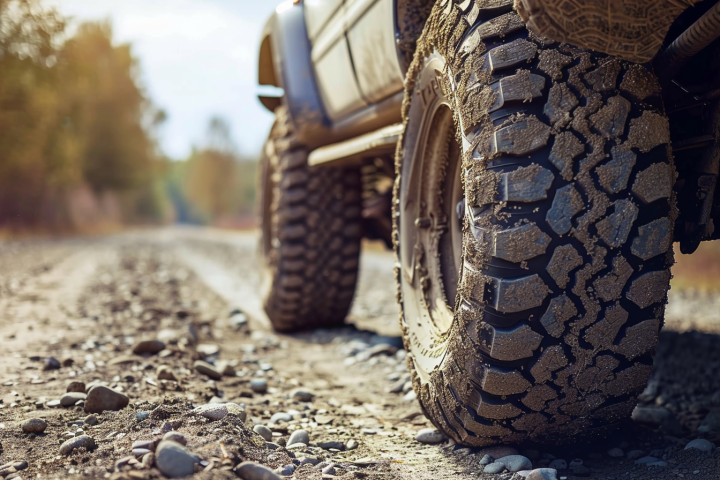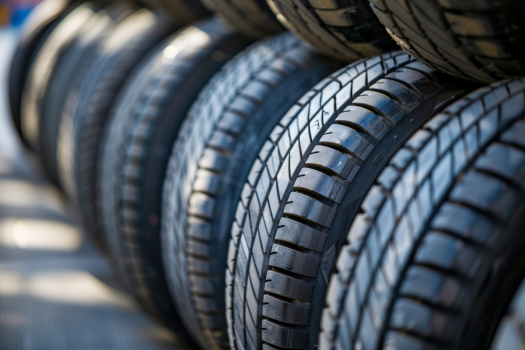Last Updated on April 21, 2024
Master the Art of Winter Driving
When the chill of winter arrives and the roads become a canvas of frost and snow, the importance of having the right tires cannot be overstated. Winter and snow tires often referred to interchangeably, are specialized tire options designed to provide the best possible grip, control, and Safety when facing cold, icy, or snowy conditions. In this comprehensive guide, we’ll navigate the intricate world of winter and snow tires, equipping you with the knowledge to choose the right tire for your winter driving adventures.

Understanding the Essentials
Unlocking the critical details about winter and snow tires:
1. What Sets Them Apart?
Winter and snow tires are engineered with distinct rubber compounds that remain flexible in colder temperatures. This flexibility ensures a firm grip on slippery surfaces, especially when navigating snow, slush, or icy roads.
2. Tread Patterns: The Art of Traction
These specialized tires feature unique tread patterns with deeper grooves and sipes. These design elements enhance their ability to bite into the snow or ice, providing the traction needed to maintain control.
3. Beyond the Tread: Studs or No Studs?
Some winter and snow tires offer the option to include metal studs. Studded tires provide additional grip on icy roads, making them a valuable choice in highly frigid conditions. However, it’s essential to check local regulations, as some areas restrict or ban studded tires due to potential road damage.
4. Size Matters
Choosing the correct tire size is crucial for optimal performance. Consult your vehicle’s manufacturer recommendations or a tire professional to ensure the right fit.
Selecting the Perfect Winter and Snow Tires
Tips for making an informed choice:
1. Know Your Climate
Understanding the specific winter conditions in your area is critical to selecting the most suitable tires. Dedicated snow tires may be the best choice for areas with frequent snowfall, while winter tires can be a versatile option for milder winter regions.
2. Prioritize Safety
Safety should always be the top priority. Investing in high-quality winter and snow tires can significantly improve your ability to maintain control and prevent accidents in challenging winter weather.
3. Consult the Experts
Don’t hesitate to seek guidance from tire professionals. They can provide valuable insights, recommend the right tire brands and models, and ensure proper installation.

Choosing the Right Winter and Snow Tires
When selecting winter and snow tires, making an informed choice is essential to ensure optimal performance, Safety, and peace of mind during cold-weather driving. In this section, we’ll explore the key factors and considerations that will guide you in choosing the perfect winter and snow tires for your vehicle and specific winter conditions.
1. Know Your Climate
Understanding the climate in your region is the first step in selecting the proper winter and snow tires. Consider the typical winter weather patterns, including the frequency of snowfall, ice, and cold temperatures. Here’s how to match your tires to your climate:
- Frequent Snowfall: Dedicated snow tires are a wise choice if you live in an area with heavy and consistent snowfall. These tires are engineered with the deepest tread patterns and specialized rubber compounds designed for maximum traction in deep snow.
- Milder Winters: All-season or winter tires with less aggressive tread patterns may suffice in regions with milder winter conditions. These tires offer better cold-weather performance than standard all-season tires.
2. Prioritize Safety
Safety should always be your primary concern when selecting winter and snow tires. Here are key safety considerations:
- Tire Quality: Invest in high-quality winter and snow tires from reputable brands. Quality tires are designed to provide consistent performance and better handling in winter conditions.
- Tire Size: Ensure you choose the right tire size recommended by your vehicle’s manufacturer. Incorrect tire size can negatively impact performance and Safety.
- Tire Pressure: Proper tire pressure is critical for winter and snow tires. Keep them inflated according to the manufacturer’s specifications to maximize their effectiveness.
3. Tread Patterns and Types
Consider the type of tread pattern that suits your driving needs:
- Studded Tires: Studded snow tires feature metal studs that provide superior traction on icy roads. However, be aware of local regulations and restrictions on studded tires, as they may not be allowed in some areas due to road damage concerns.
- Studless Tires: Studless winter tires use advanced rubber compounds and tread designs to provide excellent grip on icy surfaces without needing metal studs.
- Performance Winter Tires: These tires are designed for drivers of high-performance vehicles and offer a balance between winter capability and year-round performance.
4. Consult the Experts
If you’re unsure which winter and snow tires are right for you, don’t hesitate to consult with tire professionals. They can provide valuable insights, recommend specific tire models based on your vehicle and driving habits, and ensure the tires are correctly installed for maximum Safety and performance.
Conclusion
Winter and snow tires are your trusted companions on the icy roads of winter. Understanding their unique features and choosing the right ones for your vehicle and local conditions can elevate your winter driving experience to a safer and more enjoyable level. With the proper winter and snow tires, you’ll confidently navigate the frosty landscapes, ensuring a secure journey even when the world outside is blanketed in snow.
FAQs
Are winter tires and snow tires the same?
Winter tires and snow tires are often used interchangeably. Both refer to specialized tires designed for cold-weather conditions. Brands like Nokian Hakkapeliitta offer excellent options for zero winter traction. These tires are engineered to provide a reliable grip on snow and ice, making them ideal for winter driving.
Do I need snow tires for winter?
Investing in snow or winter tires is highly recommended if you live in an area with harsh winter conditions, such as heavy snowfall or icy roads. Michelin Pilot Alpin is an excellent choice for enhanced traction during winter. They outperform all-season tires in cold weather.
Is it better to get snow tires or all-season tires?
While all-season tires are versatile, they may not provide the same level of grip as dedicated snow tires like Nokian Hakkapeliitta R Winter or Michelin Pilot in severe winter conditions. If you frequently encounter snow and ice, opting for snow or winter tires is safer for improved traction and control. Studless winter tires balance performance and Safety during winter, ensuring you can confidently navigate challenging road conditions.










